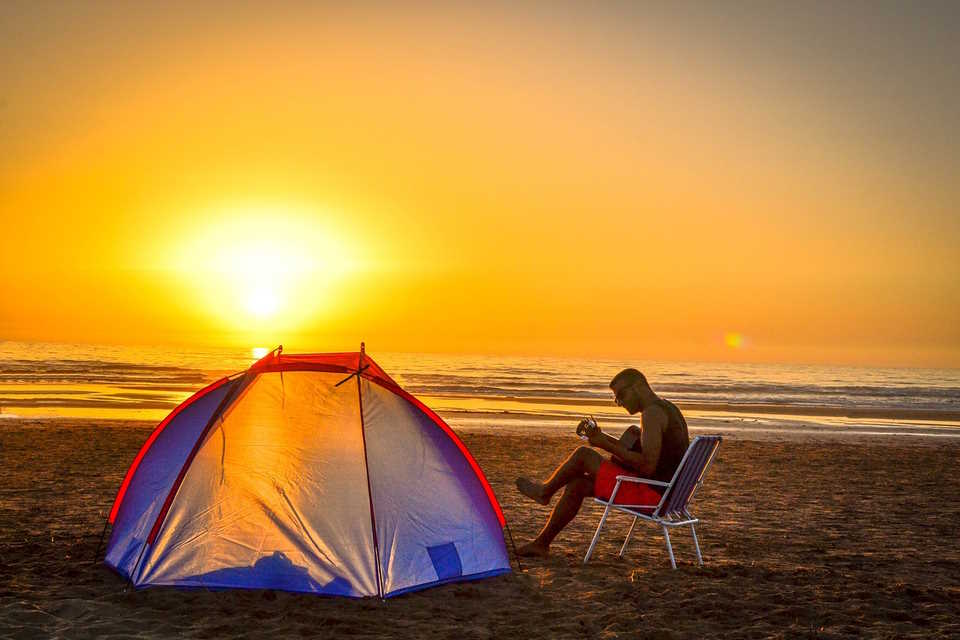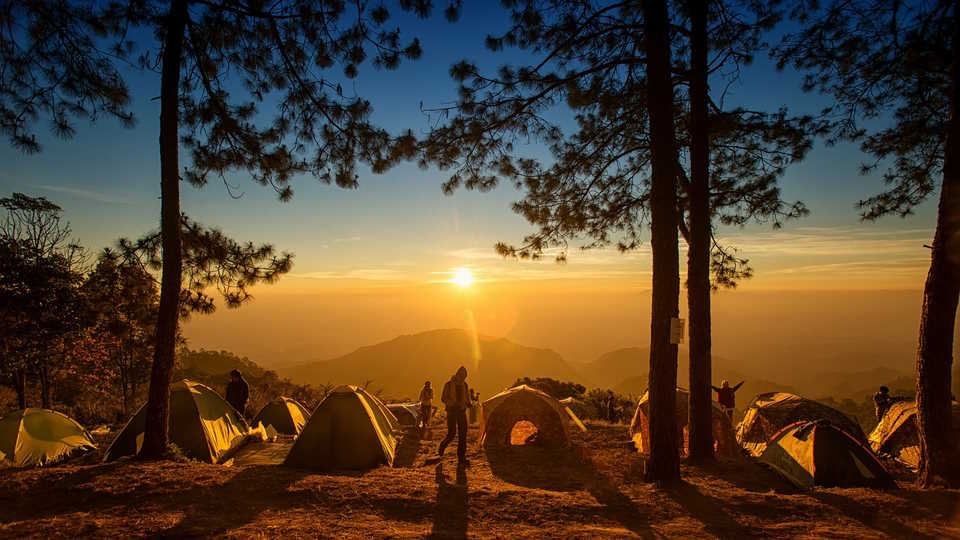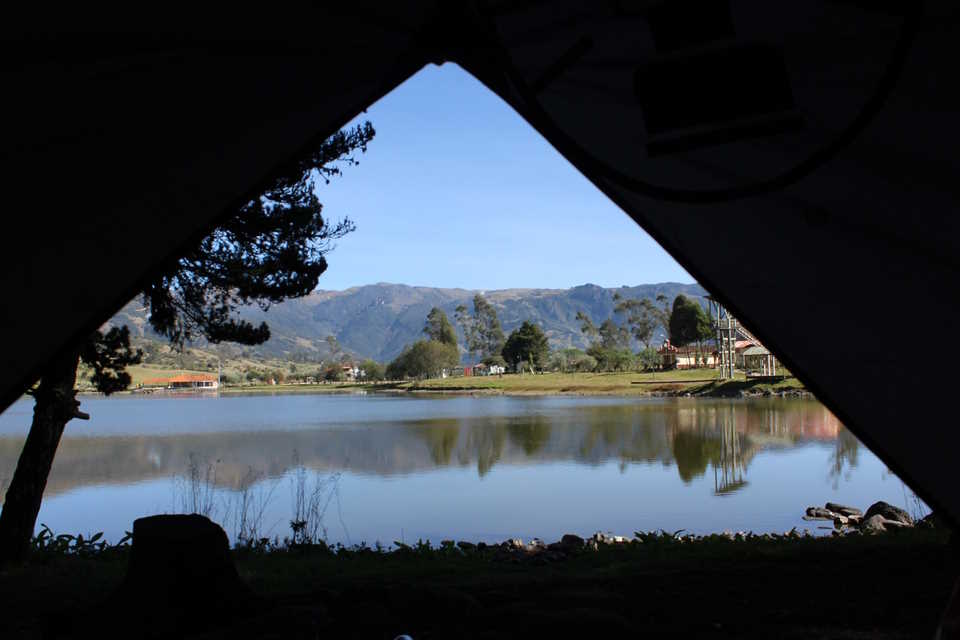If you’ve ever experienced camping in the sweltering heat, you know just how uncomfortable it can be inside a tent that turns into an oven. But fear not, we’ve got you covered with some practical tips and tricks to help you beat the heat and enjoy a cooler camping experience. We will explore the reasons why tents tend to get so hot, as well as provide you with effective strategies to cool down your tent. From using shade cloths and reflective tarps to employing fans and proper ventilation techniques, we’ll show you how to make your tent feel like a refreshing oasis in the midst of summer. So, let’s dive in and discover how to keep your tent cool – because camping should always be an enjoyable and comfortable adventure, no matter the temperature outside!
Introduction

Summer camping trips can be a blast, but they can also be uncomfortably hot. If you’re tired of tossing and turning in your tent, desperately trying to cool down, you’ve come to the right place. We’ll discuss some effective strategies to keep your tent cool during those scorching summer days and nights.
1. Choose the Right Location
The first step in keeping your tent cool is to select the right campsite. Look for a spot that offers plenty of shade, such as under a tree or next to a rock formation. Setting up your tent away from direct sunlight can significantly lower the temperature inside.
2. Ventilation is Key
Inadequate airflow can turn your tent into a stifling sauna. To prevent this, ensure that your tent has proper ventilation. Most modern tents come with mesh panels or windows that allow air to circulate. Take advantage of these features by keeping them open during the day and when the temperature drops at night.
3. Use Shade Devices
If you’re unable to find a shaded campsite or want to create additional shade, consider using shade devices. Erecting a tarp above your tent can shield it from direct sunlight and significantly reduce the temperature inside. Be sure to set it up at an angle to provide maximum shade and allow any rainwater to run off.
| Pros | Cons |
|---|---|
| Reduces temperature inside the tent | Requires extra setup |
| Provides additional shade | May obstruct views or natural light |
| Prevents tent from overheating | Can be affected by wind or rain |
Why Does My Tent Get So Hot?

Why does my tent get so hot? This is a common question for many campers, especially during the hot summer months. The heat inside a tent can be unbearable, making it difficult to get a good night’s sleep or enjoy your camping experience. However, understanding the reasons behind why your tent gets hot can help you find solutions to keep it cool and comfortable.
One of the main reasons why tents get hot is because they are designed to retain heat. Tents are typically made of materials like nylon or polyester, which are known to absorb and trap heat. When the sun shines on your tent, the material absorbs the heat, creating a greenhouse effect inside. This effect can make the temperature inside the tent significantly hotter than the outside temperature.
Another reason for the heat buildup in tents is poor ventilation. Many tents have small windows or vents that may not provide enough airflow. Without proper ventilation, the hot air becomes trapped inside, increasing the temperature. Additionally, tents that are pitched in direct sunlight for extended periods can also contribute to the heat buildup.
- Insulation: One way to reduce the heat inside your tent is to insulate it. You can use thermal blankets or insulation sheets to cover the tent, which can reflect the sun’s rays and prevent the heat from entering. Applying these insulating materials to the outside of your tent can help keep the interior temperature lower.
- Shade: Another solution is to provide shade for your tent. You can set up a tarp or canopy above your tent to create a shaded area. This can block the direct sunlight and prevent your tent from heating up. It’s important to ensure that the shade structure is securely anchored to avoid it being blown away by wind.
- Proper Ventilation: Ensuring proper ventilation is essential in keeping your tent cool. Open up any windows, vents, or doors to allow airflow. You can also use a portable fan inside your tent to increase air circulation. Position the fan near the entrance to draw in fresh air and create a cooling breeze throughout the tent.
How Do You Cool Down a Tent in the Summer?

The summer heat can turn a camping trip into a sweaty and uncomfortable experience, especially inside a tent. When the temperature rises, it’s important to find ways to cool down your tent and create a more comfortable sleeping environment. We will explore various methods and tips on how to cool down a tent in the summer.
One effective way to cool down your tent is by choosing the right campsite location. Shade is your ally when it comes to beating the summer heat. Look for a camping spot that offers natural shade from trees or nearby structures. This can help reduce the amount of direct sunlight that reaches your tent, keeping it cooler during the day. Additionally, setting up your tent on higher ground can help catch any breeze that may be present.
Another important factor to consider is ventilation. Proper airflow is crucial for keeping your tent cool. Make use of the provided windows, doors, and vents to allow air to circulate inside the tent. Consider investing in a tent with good ventilation features such as mesh windows and vents, as they can significantly improve the airflow. Additionally, you can use fans to create a breeze inside the tent. Battery-operated or portable fans can provide relief from the heat and help circulate the air.
- Choose a campsite location with natural shade.
- Set up your tent on higher ground to catch breezes.
- Make use of windows, doors, and vents for proper ventilation.
- Invest in a tent with good ventilation features.
- Use fans to create a breeze inside the tent.

Furthermore, insulation plays a significant role in keeping your tent cool. Consider adding a reflective tarp or rainfly over your tent. These can act as a barrier against the sun’s rays, preventing your tent from heating up excessively. Additionally, you can cover the tent with a tent cover during the day to provide further insulation. Insulating your tent will help maintain a lower temperature inside, making it more comfortable for sleeping.
Finally, timing is key. Plan your activities accordingly and try to spend more time outside the tent during the hottest parts of the day. Explore the surrounding attractions, go for a hike, or take a dip in a nearby lake to escape the heat. By minimizing your time inside the tent during peak temperatures, you can effectively cool down and enjoy your camping experience.
| Methods to Cool Down a Tent |
|---|
| Choose a shaded campsite location |
| Set up tent on higher ground |
| Utilize windows, doors, and vents for ventilation |
| Invest in a well-ventilated tent |
| Use fans for extra airflow |
| Add a reflective tarp or rainfly |
| Insulate with a tent cover |
| Minimize time spent inside during peak heat |
What Can I Put Over My Tent to Keep It Cool?

When camping in the summer, one common problem that many people face is a hot tent. The sun beating down on the tent can turn it into a sauna, making it uncomfortable and difficult to sleep. So, what can you put over your tent to keep it cool? Fortunately, there are several options available to provide shade and lower the temperature inside your tent.
1. A Rainfly or Tarp: One effective way to keep your tent cool is by using a rainfly or tarp. These coverings can provide much-needed shade, blocking out the direct sunlight and preventing it from heating up the tent. Make sure to set up the rainfly or tarp a few feet above the tent to allow air circulation.
2. Reflective Blankets or Tarps: Another option is to use reflective blankets or tarps. These highly reflective materials help to bounce off the sunlight and therefore keep the tent cooler. You can attach them to the top of the tent or even drape them over the sides for added shade and heat reduction.
3. Shade Canopy or Awning: If you have larger camping equipment or prefer a spacious outdoor area, setting up a shade canopy or awning can be an excellent solution. These structures can be placed next to your tent, providing a shaded area where you can relax and stay cool during the day. They not only protect the tent but also create a comfortable space to enjoy outdoor activities.
- Remember, it’s essential to choose lightweight materials that are easy to set up and take down.
- Be sure to secure any coverings properly to prevent them from getting blown away by wind gusts.
No matter which option you choose, it’s important to maintain proper ventilation inside your tent. Keep the windows open and consider using a fan to circulate air. Sometimes, a simple breeze can make a significant difference in reducing the temperature. So, next time you head out for a summer camping adventure, don’t forget to bring along the necessary equipment to keep your tent cool and comfortable.
How Do You Cool a Tent With a Fan?

If you are planning a camping trip during the hot summer months, you may be wondering how to keep your tent cool and comfortable. One effective method to cool down a tent is by using a fan. A fan can help circulate the air inside the tent, creating a pleasant breeze and preventing it from becoming too stuffy. We will explore the different ways to cool a tent with a fan and discuss some practical tips to make your camping experience more enjoyable.
1. Choose the right fan: When it comes to cooling a tent with a fan, it is important to select the right type. Battery-operated fans are lightweight and portable, making them a convenient choice for camping. Alternatively, you can also opt for a rechargeable fan, which eliminates the need for batteries and reduces waste. Make sure to choose a fan with adjustable speed settings to customize the airflow according to your preference.
2. Position the fan strategically: To maximize the cooling effect, it is crucial to position the fan strategically inside the tent. Place the fan near the entrance or a window to draw fresh air into the tent. This will help create a cross ventilation effect, where stale air is pushed out, and cool air is pulled in. Experiment with different fan placements to find the most effective position for your tent.
3. Use additional cooling methods: While a fan can significantly cool down a tent, combining it with other cooling methods can enhance the overall effect. For example, using reflective materials such as tarps or emergency blankets to cover the tent can prevent heat from entering. Additionally, hanging a wet towel or clothing near the fan can help cool the air as the water evaporates. It’s a simple yet effective way to create a mini air conditioner.
4. Stay hydrated: Camping in hot weather can lead to dehydration, so it’s crucial to stay hydrated. Drink plenty of water throughout the day and consider bringing a personal misting spray bottle. Spraying a fine mist of water on your body can help you cool down quickly.
5. Plan your camping activities wisely: To avoid the hottest hours of the day, plan your activities for the early morning or evening when the temperatures are cooler. This will allow you to enjoy your camping experience without feeling too uncomfortable inside the tent.
6. Choose a shady campsite: When setting up your tent, look for a shady spot that offers natural protection from the sun. This will help keep the inside temperature of the tent lower. If a shady spot is not readily available, consider using a shade cloth or a tarp to create your own shade.
By following these tips on how to cool a tent with a fan, you can create a more comfortable and enjoyable camping experience even in scorching summer temperatures. Remember to choose the right fan, position it strategically, and utilize additional cooling techniques to beat the heat. Stay cool and happy camping!




